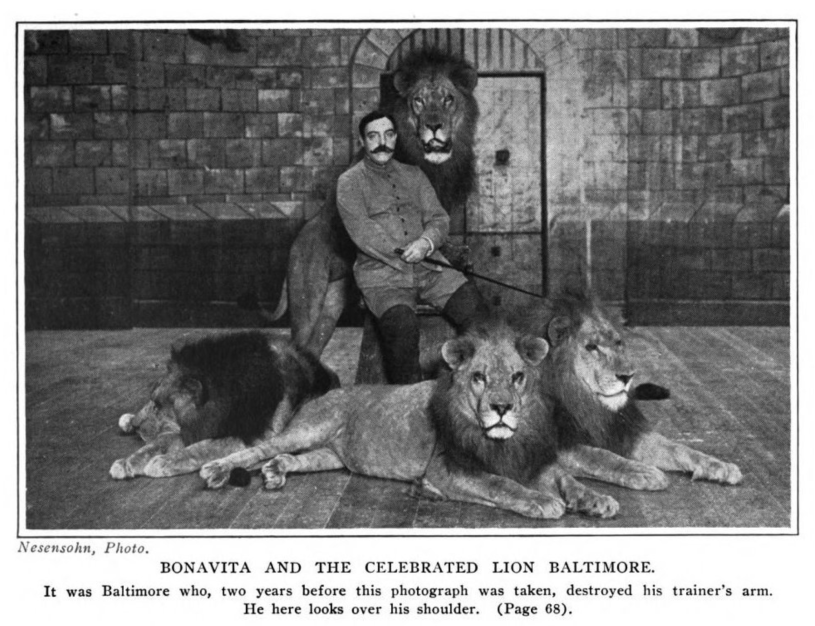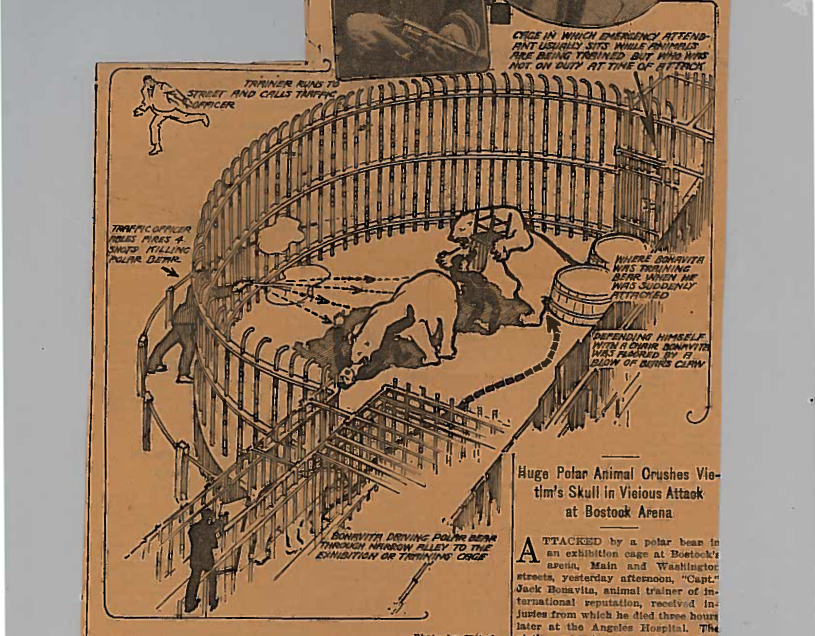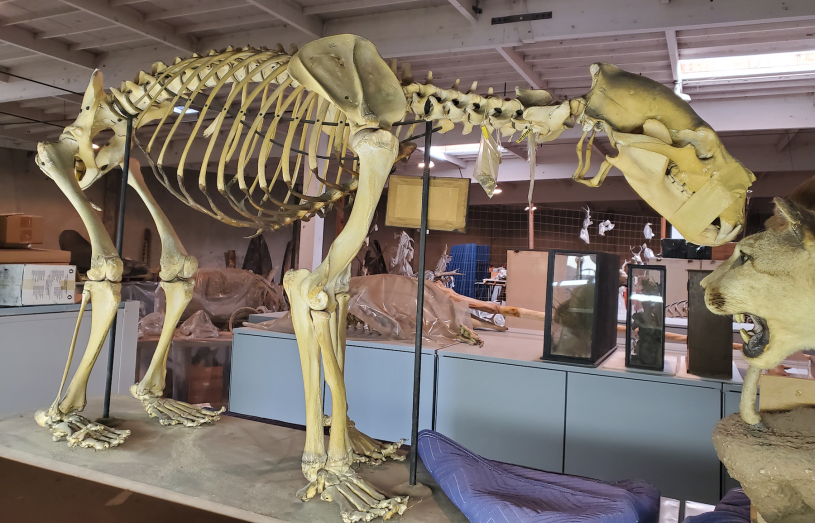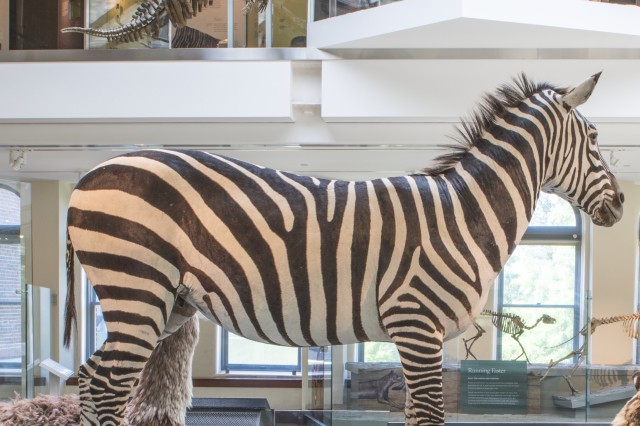The Tale of Piccolo the Polar Bear and Captain Jack Bonavita
The story of the most famous polar bear in our collections

There is a story behind every specimen in the collection.
For some of the specimens in NHM's Mammalogy Collections, the story often starts with zoos donating animals that have passed away in their care and taken on second lives as specimens to further scientific research. However, many of the oldest mammal specimens' stories begin in Hollywood motion picture menageries around the turn of the last century. At the recent 2025 Society for the Preservation of Natural History Collections meeting, Mammalogy Collections Manager Dr. Shannen Robson recently told the glitzy (and gruesome) story of how one special mammal specimen ended up in NHM's care. Here is that story.
By Dr. Shannen Robson
Captain Jack Bonavita wowed crowds in the early 1900s, headlining with death-defying lion shows at Coney Island's Dreamland amusement park in New York. Born in Philadelphia in 1866, Johann Fredrich Genter started out as a circus acrobat for P.T. Barnum, then quickly transitioned into a circus animal tamer and renamed himself Captain Jack Bonavita.

With an impressive handlebar mustache and military-style uniform, Captain Jack Bonavita could direct up to 27 lions while seated in an armchair in the center ring. Captain Jack endured many injuries, but one bloody day in July 1904 resulted in a gruesome mauling that eventually required the amputation of his entire left arm. Undeterred, Captain Jack continued with his lion show until Dreamland burned down in 1911.

Hollywood came calling, and Bonavita then had an extensive film career in Los Angeles until 1917.
Vengeance Served Ice Cold
He was attacked by a circus polar bear named Piccolo (likely due to his small stature) during a routine training session. A beat cop on the street heard Jack’s cries and ran to his rescue, shooting the polar bear dead. But it was too late, and Captain Jack was rushed to the hospital but succumbed to his injuries.

Piccolo was a wild-born polar bear said to be from Christiana, Norway, sold to a Bostock film studio, and was shot dead while mauling its famous animal trainer. After his death, Bostock President sold Piccolo the Polar Bear to the brand-new Natural History Museum for display. More than a century later, Piccolo now resides as an articulated skeleton at NHM's Mammal research collection, and Captain Jack Bonavita is interred in Hollywood Forever Cemetery.

Newspaper accounts differ on the details.
Was it six bullets or three that took down Piccolo? Was it two police officers or just a beat cop that tried to save the famous trainer? Was Bonavita's head almost severed, or did he just not make it to the hospital in time? The finer points were lost in the macabre spectacle of the moment and then to the passage of time. The more obvious point to our modern sensibility—lions and polar bears are wild predators, not performers—is more widely accepted, but still surprisingly not universal.

If you want to learn more about how big animals got into natural history museum collections, check out the book Fabricating Wilderness and the special exhibition Reframing Dioramas: The Art of Preserving Wilderness.


